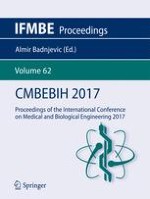2017 | OriginalPaper | Buchkapitel
Quality control of angular tube current modulation
verfasst von : M. Redžić, A. Beganović, L. Čiva, R. Jašić, A. Skopljak-Beganović, S. Vegar-Zubović
Erschienen in: CMBEBIH 2017
Verlag: Springer Singapore
Aktivieren Sie unsere intelligente Suche, um passende Fachinhalte oder Patente zu finden.
Wählen Sie Textabschnitte aus um mit Künstlicher Intelligenz passenden Patente zu finden. powered by
Markieren Sie Textabschnitte, um KI-gestützt weitere passende Inhalte zu finden. powered by
Automatic exposure control (AEC) techniques in computed tomography (CT) have been defined as automatic modulation of tube current in the x–y plane (angular AEC), along the z-axis (z-axis AEC) or both (combined AEC), according to the size and attenuation characteristics of the body region being scanned. These techniques should provide constant image quality while lowering the radiation dose to patients. Although AEC is an important feature of all modern CT units, standard methodology for quality control of AEC does not exist. Aim of the paper was to provide reliable quality control (QC) method for AEC techniques used in CT. Change of tube current during the CT examination happens only if the scan projection radiogram (SPR) shows different size and attenuation characteristics of the object being scanned. In order to maintain repeatability of the modulation we used standard polymethyl methacrylate (PMMA) dosimetry phantom, placed with flat side along the z-axis. After SPR was taken, phantom was removed, and CT solid-state detector was placed in the isocenter. Measurements were performed in axial mode, one slice only, for different positions along the z-axis. Dose rates measured in the isocenter, that are proportional to tube current, were found depending on the phantom geometry. In the phantom center the width of rectangle is the same as the diameter of the cylindrical phantom (32 cm), while height corresponds to the cylinder thickness (15 cm). Results show that during the rotation the current is highest when the tube is positioned at the x-axis, and lowest when tube is crossing the y-axis. However, when the detector is moved to position $$z = 14.1\,\mathrm{cm}$$, tube current (air kerma rate) does not change during the rotation. The methodology presented in this study could be used as a basis for defining the QC procedure for TCM. The results are consistent with the expected outcomes.
